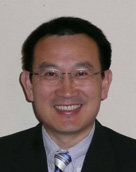Fundamentals of Photon-Counting CT
J Maltz1*, K Rajendran2*, X Tang3*, (1) GE Healthcare, Oakland, CA, (2) Mayo Clinic, Rochester, MN, (3) Emory University, Johns Creek, GA
Presentations
WE-F-201-0 (Wednesday, 7/13/2022) 1:45 PM - 2:45 PM [Eastern Time (GMT-4)]
Room 201
To meet the spirally escalating challenges alongside the advancement in clinical applications of medical imaging, enormous effort has been invested in the research and development of CT spectral imaging implemented via x-ray detection based on both energy-integration and photon-counting. Now it is exciting for us to witness that state-of-the-art photon-counting spectral CT is ready for clinical missions, while the conventional energy-integration based dual-energy CT (DECT) is still adding significant value to the clinical management of cardiovascular, oncologic and neurovascular diseases.
Compared to the energy-integration based DECT, the photon-counting CT is of a few fundamental advantages in data acquisition and image formation to fulfill the requirements set by spectral imaging. For example, the photon-counting CT acquires raw data at low and high peak voltages simultaneously to avoid the spatial mis-registration and vulnerability to involuntary visceral motion that may exist in kV-switching or dual-source technology, while spectral channelization is greatly facilitated via energy thresholding. In addition to the almost elimination of electronic noise and thus improved image quality at low-dose situations, the one-step image reconstruction algorithms is anticipated to deliver further better image quality and thus more clinical utility at low-dose and/or other challenging situations.
To fully appreciate the technological challenges and potential clinical utility of photon-counting CT, we need an in-depth re-visiting of the underlying physics and studying of the specific technological solutions to meet the challenges in instrumentation of photon-counting CT. This is the first half of the joint Education/Research session on photon-counting CT, with an emphasis on the general aspects of photon-counting CT in physics, technologies and clinical utility.
Learning objectives:
1. Understand the fundamental physics of spectral imaging in photon-counting CT
2. Understand the physics and property of photon-counting x-ray detection and the pros and cons associated with various implementations
3. Understand the conditioning of material decomposition from the perspectives of material space and spectral channelization and its optimization
4. Understand the potentials of photon-counting CT in clinical utility
Funding Support, Disclosures, and Conflict of Interest: X. Tang is recipient of a research grant from Sinovision Technologies.
Handouts
- 175-63316-16291659-182229-315070880.pdf (Xiangyang Tang)
Keywords
Not Applicable / None Entered.
Taxonomy
Not Applicable / None Entered.
Contact Email








